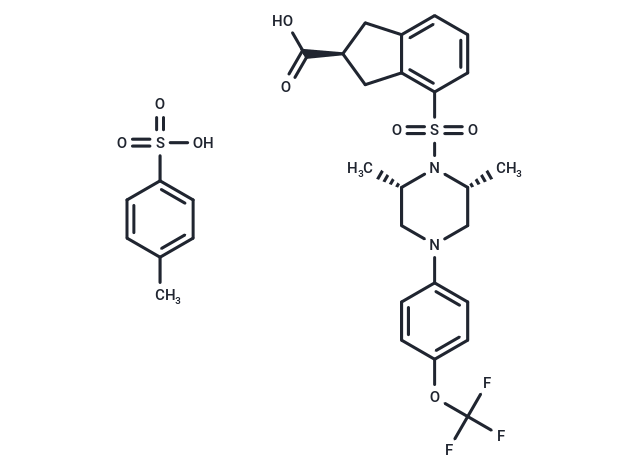Shopping Cart
- Remove All
 Your shopping cart is currently empty
Your shopping cart is currently empty

KD-3010 (Kalypsys) is an orally active potent and selective PPARδ agonist for the study of liver injury.

| Pack Size | Price | Availability | Quantity |
|---|---|---|---|
| 25 mg | $1,820 | 8-10 weeks | |
| 50 mg | $2,380 | 8-10 weeks | |
| 100 mg | $3,100 | 8-10 weeks |
| Description | KD-3010 (Kalypsys) is an orally active potent and selective PPARδ agonist for the study of liver injury. |
| In vivo | To investigate the potential benefits of PPARδ agonists in experimental liver fibrosis, mice are orally treated with a PPARδ agonist, KD-3010, or the well-validated PPARδ agonist GW501516. In liver fibrosis induced by carbon tetrachloride (CCl4) or bile duct ligation (BDL), KD-3010, but not GW501516, demonstrates hepatoprotective and antifibrotic effects. The induction of liver injury is achieved through repeated injections of CCl4, and mice are orally administered vehicle, the widely used PPARδ agonist GW501516, or the PPARδ agonist KD-3010 on a daily basis. Control mice injected with oil do not exhibit liver damage. Liver injury, characterized by hepatocyte death and inflammation, is observed in the group treated with vehicle or GW501516 and injected with CCl4 based on H&E-stained liver sections, but this injury is markedly reduced in the KD-3010-treated group[1]. |
| Molecular Weight | 670.72 |
| Formula | C30H33F3N2O8S2 |
| Cas No. | 934760-92-6 |
| Smiles | S(=O)(=O)(O)C1=CC=C(C)C=C1.S(=O)(=O)(C1=C2C(C[C@H](C(O)=O)C2)=CC=C1)N3[C@H](C)CN(C[C@@H]3C)C4=CC=C(OC(F)(F)F)C=C4 |
| Relative Density. | no data available |
| Storage | store at low temperature | Powder: -20°C for 3 years | In solvent: -80°C for 1 year | Shipping with blue ice. |

Copyright © 2015-2025 TargetMol Chemicals Inc. All Rights Reserved.